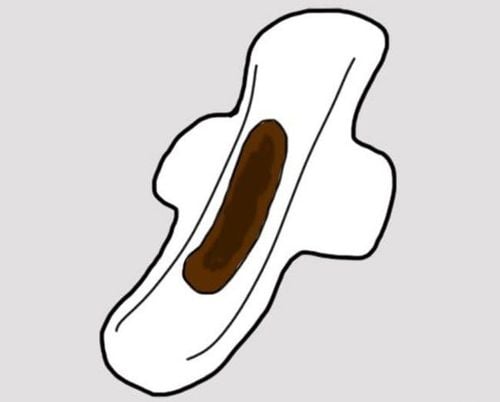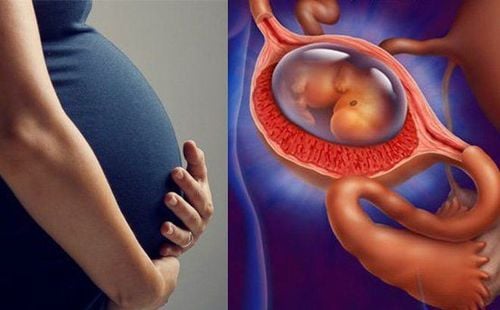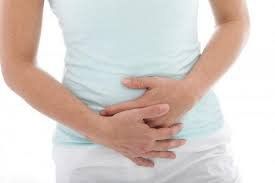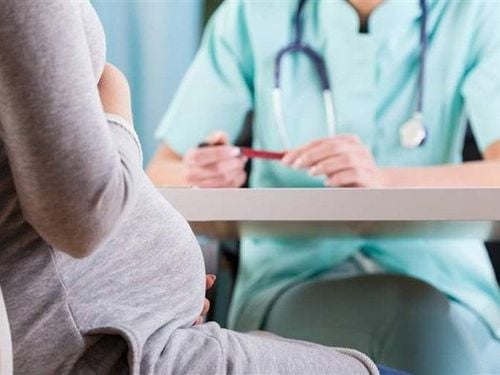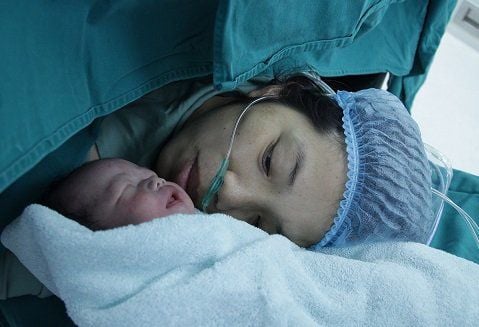This is an automatically translated article.
The article is professionally consulted by an Obstetrician and Gynecologist - Department of Obstetrics and Gynecology - Vinmec Phu Quoc International General Hospital
Pubic pain during pregnancy is a common problem in the last months of pregnancy, causing many inconveniences and affecting the quality of life of pregnant women. To overcome pubic pain during pregnancy, it is necessary to understand the cause of this phenomenon.
1. Causes of pubic pain during pregnancy
The pubic bone is part of the pelvis. The pubic bones on both sides of the body fuse to form the anterior iliac joint, which normally expands during pregnancy to accommodate the increasing size of the uterus and other changes in the pelvis. Pregnant women often face pubic pain that appears on both sides of the groin and adjacent areas such as thighs, around the pelvis. Pubic pain during pregnancy is characterized by a dull, persistent pain, sometimes as a brief, transient pain. Pubic bone pain during pregnancy can be caused by one or more of the following reasons:Hormonal changes: A woman's body has many changes during pregnancy, including changes in birth hormones. sex in the body. Pregnant women have high levels of progesterone in their blood. One of the effects of progesterone on the mother's body is the expansion of the joints, making the pelvic joints not as flexible as before and pubic pain appear. Edema: Circulatory volume in a woman's body always increases during pregnancy and the distribution changes towards focusing on placental circulation to nourish the fetus. This causes the circulatory system of the lower body to be overactive, leading to swelling, pressure and pain in the pubic bone. Position of the fetus in the uterus: In the third trimester of pregnancy, the fetus has moved inside the uterus towards the vagina, ready for the upcoming labor. This puts more pressure on the pubic bone, especially in large babies. Pubic pain following this mechanism can also occur during labor, when the fetus must pass through the vagina before birth. Multiple Pregnancy and Multiple Pregnancy: Women who have had multiple pregnancies or have had multiple previous births are at increased risk of experiencing pubic pain during pregnancy. When pregnant for the second time or more, most women have softer abdominal muscles, the fetus is in a lower position, so the pressure that the pubic bone has to bear is also higher. When you have to be physically active, the symptoms of pubic pain may appear more often with a severe degree. Fetal movement: Too strong fetal movements can also become the cause of pubic pain in a woman. Large fetus: A fetus weighing 4000 grams or more is called a large fetus. The greater the fetal weight, the greater the pressure exerted on the pubic joint. Pubic pain may be the result of one or more of these conditions in combination. Pregnant women with pubic pain should visit medical facilities for advice and treatment when the symptoms become more severe.
Trắc nghiệm: Bạn có hiểu đúng về dấu hiệu mang thai sớm?
Các dấu hiệu mang thai sớm không phải chỉ mỗi trễ kinh mà còn có rất nhiều dấu hiệu khác như xuất huyết âm đạo, ngực căng tức,… Điểm xem bạn biết được bao nhiêu dấu hiệu mang thai sớm thông qua bài trắc nghiệm này nhé!
2. Methods to help relieve pubic pain at home
Although pubic bone pain does not pose a threat to the mother's health and pregnancy development, it causes a lot of trouble in a woman's daily life. Some methods that can make pregnant women feel more comfortable are listed below:Rest properly: During pregnancy, a woman should not be too active or practice heavy sports. Building a reasonable schedule, reasonable rest will help women reduce symptoms of pubic pain. In addition, pregnant women should rest as soon as pubic pain occurs. Change position: Some of the positions that help reduce pressure on the pubic joint should be used to relieve pain. Lying on the side is the first recommended position in pregnancy, to ensure blood flow to the fetus and create comfort for the mother. When sitting, it should be noted that sitting upright with a pillow to support the back, absolutely do not squat or stoop. Pregnant women should also not sit in one position for a long time. Accordingly, should limit activities in standing position. If you have to stand, don't stand for a long time, relax your shoulders and spread your legs about shoulder width. Wear belt: Currently on the market there are many types of belts specifically for pregnant women to help limit the pressure on the pubic bone to help relieve pubic pain. Exercise: Practice gentle exercises, suitable for pregnant women such as yoga to strengthen the skeletal system. Do not wear high heels: Using high heels when moving makes the body weight focus more on the lower part, making the symptoms of pubic pain worse. Therefore, pregnant women should not wear high heels, both to reduce the risk of falls and to protect their pubic area.

Safe pregnancy and healthy baby is the legitimate aspiration of all pregnant women. Therefore, when pregnant, women should choose reputable and specialized medical facilities for examination, pregnancy management, and pregnancy care. Currently, Vinmec International General Hospital is implementing a package maternity service with outstanding quality, pregnant mothers are completely secure from pregnancy to childbirth.
Please dial HOTLINE for more information or register for an appointment HERE. Download MyVinmec app to make appointments faster and to manage your bookings easily.




